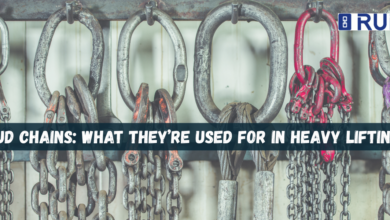Boosting Efficiency and Safety Through Industrial Robot Welding

Industrial robot welding is revolutionizing the way manufacturers achieve both efficiency and safety in their operations. By automating complex and repetitive welding tasks, these systems deliver consistent quality while reducing the risks associated with manual labor.
From lowering production errors to minimizing workplace hazards, industrial robot welding has become a key driver of modern manufacturing excellence. This article explores how businesses can boost efficiency and safety through the adoption of advanced robotic welding technologies.
How Industrial Robot Welding Improves Efficiency
Industrial robot welding makes manufacturing faster, safer, and more cost-effective. Here’s how it helps:
Faster Production:
Robots can work 24/7 without breaks, fatigue, or shift changes. This continuous operation increases output and reduces delays caused by human limitations, keeping production on schedule.
Consistent Quality:
Robots perform precise, repeatable welds every time. This consistency reduces mistakes, lowers the need for rework, and ensures uniform product quality, leading to fewer rejected parts and higher customer satisfaction.
Reduced Material Waste:
Accurate robotic welding prevents overuse of materials like wire, gas, and electrodes. This reduces scrap, saves money on consumables, and supports a more efficient, sustainable production process.
Labor Optimization:
Robots handle repetitive, heavy, or dangerous tasks. This lets human workers focus on more complex work, improves productivity, and reduces the risk of workplace injuries.
By increasing production speed, maintaining quality, reducing waste, and using labor more efficiently, robotic welding streamlines manufacturing. It helps companies save money, produce better products, and create a safer working environment, making it a smart investment for modern factories.
See also: Bunkertech Simplifies Analytics
How Industrial Robot Welding Enhances Safety
Industrial robot welding enhances workplace safety by reducing exposure to hazards, ensuring compliance with safety standards, and creating a safer work environment.
Minimizing Workplace Risks
Robots take on welding tasks that involve heat, sparks, and toxic fumes, keeping human workers away from dangerous conditions. This reduces the risk of burns, respiratory issues, and other injuries associated with manual welding.
Compliance with Safety Standards
Robotic welding systems are built to meet safety regulations. Implementing these systems helps companies stay compliant, minimize accidents, and avoid related costs.
Safer Work Environment
Collaborative robots (cobots) can safely work alongside human operators. Safety features such as collision detection, hand guidance, and emergency stop functions prevent accidents and make shared workspaces safer.
Industrial robot welding helps protect workers by reducing exposure to hazards, following safety rules, and creating a safer workplace. At the same time, it improves efficiency and product quality, making the manufacturing environment both safer and more productive.
Applications Across Industries
Industrial robotic welding has become an essential tool across many industries because it boosts efficiency, ensures consistent quality, and improves workplace safety. Here’s how it’s used in different sectors:
Automotive Manufacturing:
Robots are widely used to weld car body panels, chassis parts, and engine components. They deliver precise, repeatable welds, helping manufacturers meet strict quality standards while producing vehicles faster and more reliably.
Aerospace and Defense:
Robotic welding is used in aerospace and defense to manufacture important parts like fuselages, wings, and landing gear. Robots ensure precise and reliable welds, which are essential for meeting strict safety and performance standards.
Heavy Machinery and Construction Equipment:
Heavy machinery and construction equipment use robotic welding to join large metal parts like cranes, excavators, and bulldozers. Robots provide strong, durable welds that are vital for the safety and long-term reliability of these machines.
Metal Fabrication and Shipbuilding:
In shipbuilding, robots are used to put together hulls, decks, and offshore platforms. They make production faster, reduce mistakes, and ensure the structures are strong and reliable, which improves overall efficiency.
Electronics and Precision Industries:
In electronics, robots handle micro-assembly, PCB work, and inspection. As electronic components get smaller and more complex, robots provide the accuracy and consistency needed to produce high-quality products.
In summary, Industrial robotic welding improves efficiency, cuts costs, ensures quality, and enhances safety, making it a valuable investment.
Key Considerations for Implementation
Implementing industrial robot welding systems can greatly improve efficiency, consistency, and safety. To get the most benefits, manufacturers need to consider a few key factors:
Investment Costs vs. Long-Term Gains
Robotic welding requires a significant initial investment, including the cost of the robot, welding equipment, safety barriers, and installation. It can save money by boosting productivity, reducing labor costs, and improving product quality. Conducting a cost-benefit analysis helps determine whether the investment will deliver a strong return on investment (ROI).
Space and Infrastructure Requirements
Robotic welding systems need sufficient room for the robot, workpieces, safety barriers, and supporting equipment. It’s important to check that your facility can accommodate the system without disrupting existing workflows.
Operator Training and Programming
Operator training is important for running robotic welding systems effectively. Skilled operators can program, operate, and maintain the robots, adjust welding settings, perform routine maintenance, and troubleshoot issues, ensuring maximum efficiency and minimal downtime.
Maintenance and Technical Support
Regular maintenance keeps robots running smoothly. This includes inspections, preventive maintenance, and quick repairs when needed. A maintenance schedule and basic staff training can prevent costly downtime. Additionally, access to technical support from the manufacturer or system integrator helps resolve issues quickly.
By carefully considering these factors, manufacturers can smoothly implement robotic welding systems, improving productivity, quality, and safety in their operations.
Future Trends in Industrial Robot Welding
The future of industrial robot welding is being shaped by several key trends that make manufacturing smarter, safer, and more efficient. Here’s an easy-to-understand overview:
AI-Assisted Welding and Smart Monitoring
Artificial intelligence is helping robots work more intelligently. AI-powered systems can adjust welding settings in real-time, predict maintenance needs, and spot potential problems before they cause downtime. This improves precision, reduces errors, and lessens the need for human intervention.
Collaborative Robots (Cobots)
Cobots are robots built to work safely alongside human operators. Using sensors and AI, they can adjust to changing work conditions and perform tasks such as welding, inspection, and assembly. Their flexibility and simple programming make automation accessible for small and medium manufacturers.
Energy-Efficient and Eco-Friendly Systems
Modern robotic welding systems are becoming more environmentally friendly. They use less energy through optimized movements and power-saving features. Advanced welding methods, such as laser and ultrasonic welding, also reduce material waste, helping manufacturers cut costs and lower their environmental impact.
More Accessible for Small and Medium Manufacturers
Robotic welding, once limited to large companies because of high costs and complex setup, is now within reach for smaller manufacturers. Innovations such as AI-enhanced cobots, simple programming interfaces, and modular systems make automation affordable and manageable for smaller manufacturers.
The future of industrial robot welding is becoming smarter, safer, more environmentally friendly, and easier to use. These advancements help manufacturers boost efficiency, reduce waste, and remain competitive.




